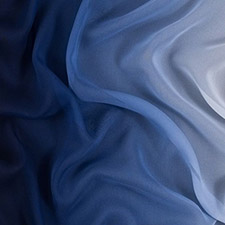Laser Cutting Tips for Antistatic Fabric
Laser cut antistatic fabric is a high-performance material specifically designed for use in electronics manufacturing, cleanrooms, and industrial protective environments. It features excellent antistatic properties, effectively preventing the buildup of static electricity and reducing the risk of damage to sensitive electronic components.
Laser cutting ensures clean, precise edges without fraying or thermal damage, unlike traditional mechanical cutting methods. This enhances the material’s cleanliness and dimensional accuracy during use. Common applications include antistatic garments, protective covers, and packaging materials, making it an ideal functional fabric for the electronics and advanced manufacturing industries.
▶ The Basic Introduction Of Antistatic Fabric
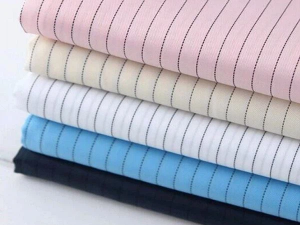
Antistatic Fabric
Antistatic fabric is a specially engineered textile designed to prevent the buildup and discharge of static electricity. It is commonly used in environments where static can pose a risk, such as electronics manufacturing, cleanrooms, laboratories, and explosive handling areas.
The fabric is typically woven with conductive fibers, such as carbon or metal-coated threads, which help dissipate static charges safely. Antistatic fabric is widely used to make garments, covers, and equipment enclosures to protect sensitive components and ensure safety in static-sensitive environments.
▶ Material Properties Analysis of Antistatic Fabric
Antistatic fabric is designed to prevent static electricity buildup by incorporating conductive fibers such as carbon or metal-coated threads, which provide a surface resistivity typically ranging from 10⁵ to 10¹¹ ohms per square. It offers good mechanical strength, chemical resistance, and maintains its antistatic properties even after multiple washes. Additionally, many antistatic fabrics are lightweight and breathable, making them suitable for protective clothing and industrial applications in sensitive environments like electronics manufacturing and cleanrooms.
Fiber Composition & Types
Antistatic fabrics are typically made by blending conventional textile fibers with conductive fibers to achieve static dissipation. Common fiber compositions include:
Base Fibers
Cotton: Natural fiber, breathable and comfortable, often blended with conductive fibers.
Polyester: Durable synthetic fiber, frequently used for industrial antistatic fabrics.
Nylon: Strong, elastic synthetic fiber, often combined with conductive yarns for enhanced performance.
Conductive Fibers
Carbon fibers: Widely used for their excellent conductivity and durability.
Metal-coated fibers: Fibers coated with metals like silver, copper, or stainless steel to provide high conductivity.
Metallic yarns: Thin metal wires or strands integrated into the fabric.
Fabric Types
Woven fabrics: Conductive fibers woven into the structure, providing durability and stable antistatic performance.
Knitted fabrics: Offer stretchability and comfort, used in wearable antistatic garments.
Nonwoven fabrics: Often used in disposable or semi-disposable protective applications.
Mechanical & Performance Properties
| Property Type | Specific Property | Description |
|---|---|---|
| Mechanical Properties | Tensile Strength | Resists stretching |
| Tear Resistance | Resists tearing | |
| Flexibility | Soft and elastic | |
| Functional Properties | Conductivity | Dissipates static charge |
| Wash Durability | Stable after multiple washes | |
| Breathability | Comfortable and breathable | |
| Chemical Resistance | Resists acids, alkalis, oils | |
| Abrasion Resistance | Durable against wear |
Structural Characteristics
Advantages & Limitations
Antistatic fabric combines conductive fibers with woven, knitted, or nonwoven structures to prevent static. Woven offers durability, knitted adds stretch, nonwoven suits disposables, and coatings boost conductivity. Structure affects strength, comfort, and performance.
Cons:
Higher cost
May wear out
Effectiveness drops if damaged
Less effective in humidity
Pros:
Prevents static
Durable
Washable
Comfortable
▶ Applications of Antistatic Fabric
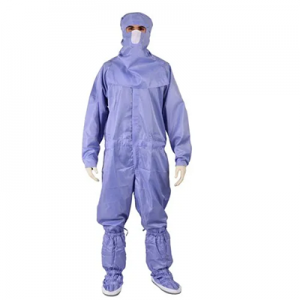
Electronics Manufacturing
Antistatic fabrics are widely used in cleanroom garments to protect electronic components from electrostatic discharge (ESD), especially during the production and assembly of microchips and circuit boards.
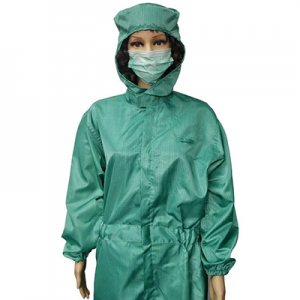
Healthcare Industry
Used in surgical gowns, bed sheets, and medical uniforms to reduce static interference with sensitive medical equipment and to minimize dust attraction, improving hygiene and safety.
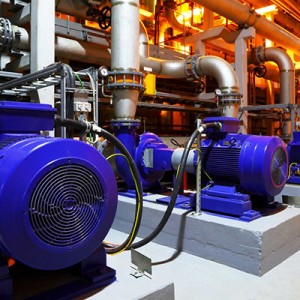
Hazardous Areas
In workplaces like petrochemical plants, gas stations, and mines, antistatic clothing helps prevent static sparks that could cause explosions or fires, ensuring worker safety.

Cleanroom Environments
Industries such as pharmaceuticals, food processing, and aerospace use antistatic garments made from special fabrics to control dust and particulate accumulation, maintaining high cleanliness standards.

Automotive Industry
Used in car seat upholstery and interior fabrics to reduce static buildup during use, enhancing passenger comfort and preventing electrostatic damage to electronic systems.
▶ Comparison with Other Fibers
| Property | Antistatic Fabric | Cotton | Polyester | Nylon |
|---|---|---|---|---|
| Static Control | Excellent – dissipates static effectively | Poor – prone to static | Poor – easily builds static | Moderate – can build static |
| Dust Attraction | Low – resists dust accumulation | High – attracts dust | High – especially in dry environments | Moderate |
| Cleanroom Suitability | Very High – widely used in cleanrooms | Low – sheds fibers | Moderate – needs treatment | Moderate – not ideal untreated |
| Comfort | Moderate – depends on blend | High – breathable and soft | Moderate – less breathable | High – smooth and lightweight |
| Durability | High – resistant to wear and tear | Moderate – can degrade over time | High – strong and long-lasting | High – abrasion resistant |
▶ Recommended Laser Machine for Antistatic
We Tailor Customized Laser Solutions for Production
Your Requirements = Our Specifications
▶ Laser Cutting Antistatic Fabric Steps
Step One
Setup
Ensure the fabric is clean, flat, and free of wrinkles or folds.
Secure it firmly on the cutting bed to prevent movement.
Step Two
Cutting
Start the laser cutting process, monitoring carefully for clean edges without burning.
Step Three
Finish
Check edges for fraying or residue.
Clean if necessary, and handle fabric gently to maintain antistatic properties.
Related vedio:
Guide to the Best Laser Power for Cutting Fabrics
In this video, we can see that different laser cutting fabrics require different laser cutting powers and learn how to choose laser power for your material to achieve clean cuts and avoid scorch marks.
Learn More Information about Laser Cutters & Options
▶ Antistatic Fabric's FAQs
Anti-static fabric is a type of textile designed to prevent or reduce the buildup of static electricity. It does this by dissipating static charges that naturally accumulate on surfaces, which can cause shocks, attract dust, or damage sensitive electronic components.
Antistatic clothes are garments made from special fabrics designed to prevent or reduce the buildup of static electricity on the wearer. These clothes typically contain conductive fibers or are treated with antistatic agents to safely dissipate static charges, helping to avoid static shocks, sparks, and dust attraction.
Antistatic clothing must meet standards like IEC 61340-5-1, EN 1149-5, and ANSI/ESD S20.20, which define requirements for surface resistance and charge dissipation. These ensure the garments prevent static buildup and protect workers and equipment in sensitive or hazardous environments.





